Glossary
Abstraction - Loss of tooth surface at the cervical areas of teeth (near the gum line) caused by tensile and compressive forces during tooth flexure. These are wedge shaped notches involving enamel loss. They are susceptible to decay & can be extremely sensitive due to dentine exposure. May or may not require treatment depending on the extent
Abrasion - Abnormal loss of tooth structure due to non-masticatory friction such as using a hard toothbrush or improper brushing technique. Involved teeth may be cold or hot sensitive .Treatment involves correcting brushing technique, using a soft toothbrush and tooth coloured bond0ing
Abscess - A localized accumulation of pus caused by an infection. Once tooth decay infects the pulpal tissue inside the tooth, if left untreated will cause disintegration of the tissue and accumulation of pus in the pulpal and periapical tissues causing a periapical abscess.
Abutment - A tooth , root or implant used for support and retention of a fixed or removable prosthesis
Acetaminophen ( Tylenol-trade name ) – Non-nacrotic analgesic . Used in mild to moderate pain and fever
AIDS (Acquired Immunodeficiency Syndrome) – disease caused by a retro-virus (HIV-1). Generalized lymphadenopathy, persistent fever, diarrhea and weight loss are some of the associated symptoms
Acromegaly – A hormone disorder caused by excess production of growth hormone by the pituitary gland . Characterized by enlargement of the hands, feet, jaws, spacing between teeth and deepening of the voice due to enlarged sinuses and vocal cords. Patients who wear dentures will have to frequently replace them due to the enlargement of the jaws
Acrylic resin - formed from acrylic acid. Used in dentistry to make denture teeth and temporary crowns
ADA - American Dental Association, professional organization for dentists in the United States of America
Adverse drug reaction - Harmful, unintended reaction to a drug administrated at a normal dosage
Aglossia - Developmental anomaly in which a portion or all of the tongue is absent
Alginate - Commercial varieties of alginate are extracted from seaweed. It absorbs water very quickly and is used in dentistry for making impressions
Allograft - Graft tissue obtained from human cadavers. (Genetically dissimilar members of the same species). Allografts go through a series of radiation, chemical and freezing processes and is prepared at tissue banks.
Alloplastic Grafts - Synthetic graft materials
Adhesive dentistry - contemporary term for dental restorations that involve "bonding" of composite resin or porcelain fillings to natural teeth
Air abrasion - removal of tooth structure by blasting a tooth with air and abrasive, a relatively new technology that may avoid the need for anesthetic
Allergy - unfavorable systemic response to a foreign substance or drug
Alveolar bone - the portion of the jaw bone that anchors the roots of teeth
Amalgam - most common filling material, also known as "silver fillings". It is an alloy of mercury (app 50%), silver, tin, copper and zinc. It does not chemically bond to the tooth structure and is not esthetic.
Analgesia - a state of pain relief; an agent lessening pain
Anesthesia - partial or complete elimination of pain sensation; numbing a tooth is an example of local anesthesia; general anesthesia produces partial or complete unconsciousness
Anterior teeth - the six upper or six lower front teeth
Antibiotic - a drug that stops or slows the growth of bacteria
ANUG - an acronym for Acute Necrotizing Ulcerative Gingivitis, commonly known as trench mouth or Vincent's disease, aggravated by stress and/or smoking. Characterized by small punched out ulcers of the gingival papillae
Apex - the tip of the root of a tooth
Apicoectomy - surgical removal of the root tip to treat a dead tooth
Arch - describes the alignment of the upper or lower teeth
Attrition - loss of structure due to natural wear
Augmentation - Placement of a graft or any procedure that corrects a soft (example - gums) or a hard tissue (example - Bone) deficiency.
Autogenous Graft - Graft material taken from one site and transplanted to another site in the same individual.
Base - cement placed under a dental restoration to insulate the pulp (nerve chamber) from temperature changes
Bicuspid or pre-molar - transitional teeth behind the cuspids . They usually have two cusps buccal and lingual cusps hence the name, bicuspids.
Bifurcation (trifurcation) - juncture of separation of two (three) roots from the root trunk in posterior teeth
Biopsy - removal of a small piece of tissue for microscopic examination
Bioinert - Property of a material that elicits no reaction of the body such as immune response or inflammation
Biomaterial - Non-viable material used to replace part of the living system or function in contact with the living system
Biointegration - Bonding of living tissue to a biomaterial or implant
Bioabsorbable - Property of a material to degrade or dissolve inside the body by the body mechanisms.
Bite - relationship of the upper and lower teeth on closure (occlusion) to each other.
Bite wings - caries (decay) detection x-rays showing the crowns of the upper and lower molars in the section x-rayed.
Black hairy tongue - elongated papillae on the tongue, promoting the growth of microorganisms.
Bleaching - chemical or laser treatment of natural teeth for whitening effect.
Block injection -anesthesia of a nerve trunk that covers a large area of the jaw ; for example a mandibular block injection produces numbness of the lower jaw, teeth, half the tongue and lip on the side injected.
Block Graft - Autogenous bone or Bone Allograft stabilized in the recipient site with screws. Used when there is a huge bone defect.
Bonding - adhesive dental restoration technique; a tooth-colored composite resin to repair and/or change the color or shape of a tooth.
Bone resorption - decrease in bone supporting the roots of teeth; a common result of periodontal (gum) disease, caused by toxins released by the micro-organisms in plaque
Bone Augmentation - Procedure that corrects bone deficiency by using a graft.
Bone Atrophy - Decrease in dimension of bone due to bone loss.
Braces - devices used by orthodontists to gradually reposition teeth to a more favorable alignment
Bridge – fixed dental prosthesis replacing one or more missing teeth ; cemented or bonded to supporting teeth or implants adjacent to the space
Bruxism – involuntary, unconscious, destructive grinding of the teeth, most commonly while the patient is asleep. Characterized by extensive wear of teeth , sensitive teeth and soreness of jaw joints upon awakening
Bruxomania - persistent "nervous" grinding of the teeth while the patient is awake
CAD/CAM - Computer aided design/ computer aided manufacturing
Calcium - chemical element needed for healthy teeth, bones and nerves
Calculus - hard residue, commonly known as "tarter," that forms on teeth due to inadequate plaque control, often stained yellow or brown
Canker sore - mouth sore appearing whitish, often with a red halo, of ten to fourteen day duration . Also known as aphtous ulcers
Cantilever bridge - fixed bridge that attaches to adjacent teeth only on one end
Cap - common term for dental crown
Caries - tooth decay or "cavities"
Cast or model - reproduction of structures made by pouring plaster or stone into a mold or impression
CAT scan - Computed axial tomography scan. Helps in determining available bone for precise implant placement
Cavitron - dental tool that uses high frequency ultrasonic waves to clean teeth
Cellulitis - soft tissue infection causing extensive, hard swelling, a potentially dangerous condition requiring immediate attention. Can arise from an untreated tooth
Cementum - hard tissue that covers the roots of teeth
Chart - log of dental or medical records
Clasp – metal or acrylic part of a removable partial denture that hooks on to natural teeth to retain the partial in the mouth
Cleaning -removal of plaque and calculus (tarter) from teeth, generally above the gum line. Also referred to as Prophylaxis
Commercially pure titanium - Biocompatible metal commonly used for dental implants. It is an alloy of Titanium 99 wt. % and small amounts of oxygen with trace amounts of iron, hydrogen, carbon and nitrogen.
Composite resin - material composed of plastic with small glass or ceramic particles; usually cured with filtered light or chemical catalyst
Complication - An unfavorable condition that may be reversible or irreversible. Cosmetic (aesthetic) dentistry - treatments performed to enhance appearance by altering the shape and color of the teeth
CPR (cardiopulmonary resuscitation) - Artificial procedures employed by a rescuer after cessation of breathing or heart stoppage
Cross bite - reverse biting relationship of upper and lower teeth; the lower teeth are ahead of the upper teeth in their relationship
Crown -
(1) the portion of a tooth above the gum line;
(2) dental restoration covering all or most of the natural tooth
Curettage - removal of diseased tissue from a periodontal pocket. Usually done in conjunction with scaling and root planning (deep cleaning)
Cusp - mound on posterior teeth
Cuspid or canine – transition from incisors to cusped teeth. Also called the eye teeth. They are the teeth with the longest roots and form the corners of the mouth
Cyst - a soft or hard tissue sac, hard or filled with fluid
DDS - Doctor of Dental Surgery - equivalent to DMD
DMD - Doctor of Medical Dentistry - equivalent to DDS
Decay -destruction of tooth structure caused by acids produced by plaque microorganisms
Deciduous teeth - commonly called "baby teeth," the first set of (usually) twenty teeth which begin to erupt at 5-6 months of age .Eruption is completed at the age of 21/2-3 years of age.
Delayed Loading - Refers to the time of applying force on an implant by means of a temporary prosthesis after initial placement. This time depends on the quality of bone and primary stability of the implant.
Dentin –inner sensitive layer of tooth structure, immediately under the surface enamel
Dental implant -a (usually) titanium cylinder surgically placed in the bone of the upper or lower jaw to provide support for a dental restoration or appliance
Dentition - the arrangement of natural or artificial teeth in the mouth
Denture - removable (partial or complete) set of artificial teeth
Diastema - space between teeth
Diagnostic wax-up - Laboratory procedure in which teeth are created in wax according to the planned restoration. It may be used to evaluate the feasibility of a proposed plan and to fabricate a radiographic template, a surgical guide, or laboratory guides.
Disuse Atrophy - Diminution in the density and/or dimension resulting from inactivity.
Donor Site - Area of the body from which graft is harvested
Enamel -hard tissue covering the outer portion of tooth above the gum line
Endodontist -specialist who diagnoses and treats injuries, diseases and infections of the tooth pulp (nerve chamber)
Epidemiology - study of the incidence of disease in a population
Eruption -process of teeth protruding through the gums
Exfoliate - process of shedding deciduous (baby) teeth
Exodontia - practice of dental extractions
Explorer - sharp instrument used to detect decay on the surface of teeth
Extraction - removal of a tooth usually elevators and forceps
Eyeteeth - the four upper and lower canine (cuspid) teeth
Facing - tooth colored overlay on the visible portion of a crown to alter the shape and color of the tooth; may be acrylic, composite or porcelain
Failed implant - An implant that is mobile and symptomatic.
Filling - restoration of lost tooth structure with metal, porcelain or resin materials to re-establish function and esthetics
Fistula - channel emanating pus from an infection site; a gum boil
Fixed Prosthesis - A restoration that is not removable by the patient.
Flap surgery - lifting of gum tissue to expose and clean underlying tooth and bone structures
Forceps - instrument used for removal of teeth
Forensic dentistry - practice of gathering legal evidence for body identification or judicial issues
Freeze - dried bone allograft - Bone harvested from donor cadavers, washed, immersed in ethanol, frozen in nitrogen, freeze dried and ground to similar particles ranging from 250-750 microns.
Full denture -removable dental prosthesis (appliance) replacing all upper or lower teeth
Full mouth reconstruction - extensive restorations of natural teeth with crowns and or fixed bridges/implants to re-establish normal relation of the teeth to each other and the jaws
Frenectomy - removal or reshaping of thin muscle tissue that attaches the upper or lower lips to the gum, or the tongue to the floor of the mouth
GTR - (guided tissue regeneration) a new technique for guiding bone growth and preventing epithelial ingrowths
General anesthesia - controlled state of unconsciousness, accompanied by a partial or complete loss of pain sensation, protective reflexes, and the ability to respond purposefully to physical stimulation or verbal command
Geographic tongue - benign changes in the usual color and texture of tongue; does not require treatment
Gingival - gum tissue
Gingivectomy - surgical removal of gum tissue
Gingivitis - inflammation of gum tissue
Grafting material - A substance natural or synthetic used to repair a tissue defect or deficiency
Gum recession - exposure of dental roots due to shrinkage of the gums as a result of abrasion, periodontal disease or surgery
HA -Hydroxyapatite
Halitosis -bad breath of oral or gastrointestinal origin
Heimlich Maneuver -technique employed by rescuer for obstruction of victim's airway
Hematoma -swelling of effused blood beneath tissue surface
HMO or DMO -health (dental) maintenance organization which specifies a health care (dental) provider a patient may see
Hygienist -dental auxiliary who cleans teeth and provides patient education; administers local anesthetic, nitrous oxide and performs periodontal scaling
Hyperbaric oxygen therapy -Treatment modality where a patient is placed in a pressurized chamber that allows for the delivery of oxygen in high concentrations for therapeutic purposes. It is sometimes used prior to implant therapy or extractions for patients who underwent radiation therapy in the head and neck areas to reduce the risks of osteoradionecrosis.
Hyperemia -increased blood flow to a region
Hyperplasia - Excessive enlargement of a tissue due to increase in the number of cells.
Immediate Implant Placement - Placement of an implant at the time of dental extraction into the extraction socket.
Impacted tooth - If a tooth fails to emerge or emerges partially and remains embedded in soft gingiva (gum) tissue or bone is wedged against another tooth beyond its normal eruption time it is impacted.
Implant Dentistry - Field of dentistry that deals with the diagnosis, surgical placement, prosthetic reconstruction, and maintenance of dental implants
Implant - artificial titanium cylindrical device replacing tooth root; may anchor an artificial crown, bridge or denture
Implant supported prosthesis - A restoration that derives its entire support from dental implants.
Implant – tissue supported prosthesis - A prosthesis that derives its support from a combination of intra oral tissues and dental implants.
Impression - mold made of the teeth and soft tissues
Incision and drainage - surgical incision of an abscess to drain suppuration (pus)
Incisors - four upper and four lower front teeth, excluding the cuspids (canine teeth)
Infiltration -local anesthetic procedure effective for upper teeth, lower anterior teeth and soft tissue; involves placement of anesthetic under the gum, allowing it to seep into bone
Inlay - indirect - filling made by a dental laboratory that is cemented or bonded into place, direct - placement of dental composite resin restoration at chairside
Interproximal - surfaces of adjoining teeth
Interocclusal – space between upper and lower teeth
Intraoral camera - a small video camera used to view and magnify oral conditions;images may be printed
In vitro - Outside of the living organism or natural system
In vivo - Within the living organism or natural system
Isografts - A tissue graft transplanted from one genetically identical individual to another as in identical twins.
Jacket crown - crown for a front tooth, usually made of porcelain
Laminate -thin plastic or porcelain veneer produced in a dental laboratory and then bonded to a tooth
Laughing gas - nitrous oxide; odorless inhalation agent that produces relative analgesic (sedation); reduces anxiety and creates a state of relaxation
Lesion -injury of bodily tissue due to infection, trauma or tumor
Local anesthesia -partial or complete elimination of pain sensation by blocking nerve impulses
Malocclusion -"bad bite" or misalignment of the upper and lower teeth or jaw
Mandible -the lower jaw
Mandibular canal -is the canal within the mandible that houses the nerve and blood vessels that supply the lower jaw and teeth.
Maryland bridge -a bridge that is bonded to the back of the adjacent teeth; requires minimum tooth reduction .Usually used to replace a missing anterior tooth.
Mastication -process of chewing food
Maxilla -the upper jaw
Maxillary Sinus -Air cavity inside the body of the maxilla
Meniscus -capsular cushion between temporomandibular joint and glenoid fossa (part of the base of the skull)
Milk teeth -deciduous (baby) teeth
Molars – cusped (4-5 cusps) posterior teeth in each dental quadrant used for grinding food.
Moniliasis (thrush) - opportunistic fungal infection after prolonged administration of antibiotics ; not uncommon in the mouth
Mucogingival junction (MGJ) - junction of thick, attached gingival tissue around the teeth and the unattached loose mucous lining of the cheeks and lips
NSAID - non steroidal anti-inflammatory drug, often used as a dental analgesic
Nerve - tissue that transmits sensation of temperature, pressure and position information to the brain
Nerve (root) canal - the internal chamber of a tooth which houses the nerve tissue
Nerve repositioning -Surgical procedure whereby the course of the nerve in the mandibular canal is redirected in order to place longer implants in a mandible where there is extensive loss of bone
Night guard - acrylic appliance used to prevent teeth wear and temporomandibular damage caused by grinding of the teeth during sleep
Nitrous oxide(laughing gas) - a gas used to reduce patient anxiety during dental treatment
Novocain - older brand name for a local anesthetic, currently replaced by safer, more effective agents
Occlusion - relationship of the upper and lower teeth upon closure
Onlay - laboratory processed porcelain or metal restoration covering one or more cusps of a tooth
Onlay graft - Autogenous or Bone replacement graft placed on existing bone to increase the width or height of bone
Oral and maxillofacial surgeon - a dental specialist with special training in surgery of the mouth and jaw. Diagnoses & surgical treats diseases, injuries, and deformities of the mouth and supporting structures; Requires four additional years of training after dental school
Oral cavity - the mouth
Oral hygiene - The practice of keeping the mouth, teeth, and gums clean and healthy to prevent disease, as by regular brushing and flossing and visits to a dentist.
Oral and maxillofacial surgery - surgical procedures on the mouth including extractions, removal of cysts or tumors, and repair of fractured jaws
Oral pathologist - dentist specializing in the study of oral diseases
Oral Pathology - A branch of dentistry that is concerned with the diseases of the teeth, oral cavity, and jaws, and with the oral manifestations of systemic diseases. Oral pathology is the specialty of dentistry which deals with the nature, identification, and management of diseases affecting the oral and maxillofacial regions. It is a science that investigates the causes, processes and effects of these diseases.
O-ring - Doughnut shaped over denture attachment that possess the ability to bend and return to its approximate original shape
Orthodontics - dental specialty that treats mal -alignment of teeth and jaws
Osseous – bone
Osteonecrosis - Death or necrosis of bone
Osteoradionecrosis - Bone necrosis caused by excessive exposure to radiation
Overbite - vertical overlap of the front teeth
Overdenture - denture that fits over residual roots or dental implants and provides added retention to the denture
Overjet – horizontal overlap of the front teeth
Palate - hard and soft tissue forming the roof of the mouth
Palliative treatment - non invasive treatment for pain relief
Panoramic Radiograph - A radiographic view showing both the entire upper and the lower jaw in one film
Parasthesia - tingling, pricking, or numbness sensation (altered sensation)of a person's skin , more generally known as the feeling of pins and needles; may be temporary or permanent
Partial denture - removable dental prosthesis (appliance) replacing one or more natural teeth
Pathology - study of disease onset, course and duration
Periapical (PA) - region at the end of the roots of teeth
Peri-implantitis - Inflammatory reactions in the hard and soft tissues surrounding an implant exposed to the oral environment.
Periodontal surgery - recontouring or esthetic management of diseased gum and supporting tissue
Periodontist - dental specialist treating the gums and supporting soft and hard tissues retaining natural teeth and the surgical placement of dental implants
Pedodontics or pediatric dentistry - dental specialty specializing in the treatment of children
Periodontal chart – chart used to record pocket depths measurements around the teeth
Permanent teeth – second and final set of teeth in humans ; (usually) thirty-two adult teeth in a complete dentition
Pit - a small defect in the tooth enamel; junction of four formative lobes of a developing tooth
Placebo - inert medication or treatment that produces psychological benefit
Plaque - soft sticky substance that accumulates on teeth; composed of bacteria and food debris due to inadequate dental hygiene
Pontic – artificial tooth replacing one or two missing teeth ; part of a fixed bridge
Porcelain crown - all porcelain restoration covering the coronal portion of tooth (above the gum line) to reestablish function and esthetics
Porcelain fused to metal (PFM) crown - restoration with metal coping (for strength) covered by porcelain (for appearance)
Porcelain inlay or onlay – lab processed tooth-colored restoration made of porcelain, cemented or bonded in place
Porcelain veneers - a thin layer of porcelain, fabricated by a laboratory bonded to a natural tooth to replace lost tooth structure, close spaces, straighten teeth or change color and/or shape
Post - thin metal or fiber rod inserted into the root of a tooth after root canal therapy; provides retention for a "coping" that replaces lost tooth structure and retains crown
Post-core - post and buildup to replace lost tooth structure and retain crown
PPO or PDO - preferred provider (dental) organization which a health care (dental) provider may join, offering fee for service treatment at reduced fees
Prognosis - the anticipated outcome of treatment
Progressive loading - Gradual increase in the application of load on a prosthesis and thus on the implant
Prophylaxis – regular routine cleaning of the teeth for the prevention of periodontal disease and tooth decay
Prosthesis - An artificial replacement of a missing part of the body
Prosthodontist - dental specialist skilled in restoring or replacing teeth with fixed or removable prosthesis (appliance), maintaining proper occlusion; treats facial deformities with artificial prostheses such as eyes, ears, and noses
Pulp - the nerves, blood vessels and connective tissue inside a tooth
Pulp cap - a medicated covering over a small area of exposed pulp tissue to aid healing
Pulp chamber - the center or innermost portion of the tooth containing the pulp
Pulpectomy - complete removal of the infected pulp
Pulpitis - inflammation of the pulp; common cause of toothache; could be reversible or irreversible
Pulpotomy - partial removal of the pulp tissue commonly done in children teeth
Pyorrhea - older term for periodontal (gum) disease
Reimplantation – re-insertion and temporary fixation of partially or completely avulsed tooth or teeth back into the socket , resulting from traumatic injury
Reline - acrylic restoration of denture base to compensate for bone lossand soft tissue remolding ; direct: done at chairside(soft reline); indirect: in conjunction with a dental laboratory(lab reline )
Resorption - The loss of substance or bone by physiological or pathological means
Retained root - partial root structure remaining in jaw after extraction or fracture of a natural tooth
Ridge - The remainder of the alveolar process (socket) after tooth extraction
Ridge Preservation (extraction socket graft) - The immediate placement of a graft material in an extraction socket following removal of a tooth. This helps to preserve bone and soft tissue architecture
Root canal – interior canal system of the tooth
Root canal therapy - process of removing pulp of a tooth and filling it with an inert material
Root resection - removal of a portion of diseased root structure, retaining the remaining natural tooth
Rubber dam - soft latex sheet used to establish isolation of one or more teeth from contamination by oral fluids and to keep materials from falling to the back of the throat
Saliva - clear lubricating protective fluid in the mouth containing water, enzymes, bacteria, mucus, viruses, blood cells and undigested food particles
Saliva ejector - suction tube placed in the mouth to remove saliva and blood
Salivary glands – glands located under tongue and in cheeks, produce saliva to lubricate the mouth and act on food to start the digestive process
Scaling and root planning – professional removal of plaque and calculus from tooth surfaces using hand instruments and ultrasonic devices
Sealants - thin resin material bonded in the pits and fissures of back teeth for the prevention of decay
Secondary dentin - reparative tooth structure produced by the pulp in response to tooth irritation
Sequstrum - loosened spicule of bone pushed to the surface
Sinus Graft - Grafting the maxillary sinus with autogenous bone or bone replacement graft material to facilitate the placement of longer length implants
Sinusitis - infammation of the sinus that may mimic dental pain in the upper teeth
Sinusitis (maxillary) - Inflammation of the sinus. Signs include sensitivity of the teeth to tapping, fever and facial swelling. Symptoms includes nasal congestion, post- nasal discharge, bad taste in the mouth, mouth odor, popping of the ears and muffled hearing
Sleep apnea - the periodic interruption or delay in breathing during sleep
Space maintainer - dental device that holds the space lost through premature loss of baby teeth until the eruption of the permanent teeth
Supernumerary tooth - extra tooth
Splinting - Joining of two or more teeth or implants into a rigid or non-rigid unit by means of a fixed or removable restoration
Suppuration - the formation of pus
Stent - A device used in conjunction with a surgical procedure to keep the graft in place or protect a surgical site during the initial healing period
Tartar - common term for dental calculus, a hard calcified deposit that adheres to teeth; produces rough surface that attracts plaque
Tissue bank - Laboratory specialized in the harvesting, processing, and sterilization of tissues from humans and animals
Tmd (or tmj disorder) - temperomandibular disorder; term given to condition characterized by facial pain and restricted ability to open or move the jaw
Tmj - the temporomandibular joint, the point where the lower jaw articulates with the skull
Tooth bud - early embryonic structure that differentiates into a tooth
Tooth whitening - a chemical or laser process to lighten the color of teeth
Topical anesthetic – gel that produces mild anesthesia when applied to tissue surface aiding painless penetration of the anesthetic needle for profound dental anesthesia
Torus – benign bony protuberance on the palate or lower jaw seen in some people
Transplant - placing a natural tooth in the empty socket of another tooth
Trench mouth - gum disease characterized by severe mouth ulcers ,halitosis and loss of tissue. See ANUG.
Tuberosity (maxillary) - It is the most distal portion of the maxillary ridge bilaterally. It may be used as a source of bone graft or serve as support for a prosthesis
UCR - usual, customary and reasonable fees
Unerupted tooth - a tooth that has not pushed through the gum and assumed its correct position in the dental arch
Veneer – thin composite or porcelain facing bonded directly to a natural tooth to improve its color and appearance. See laminate.
Vertical dimension - distance between two fixed points on the upper and lower jaws measured upon closure at rest(no contact of teeth ) or at occlusion (maximum intercuspation of teeth ) may decrease over time due to wear, shifting or damage to the teeth
Wisdom teeth - third (last) molars that usually erupt at age 18-25
Xenografts - Graft material harvested from different species mainly bovine
Xerostomia - dry mouth or decrease in the production of saliva




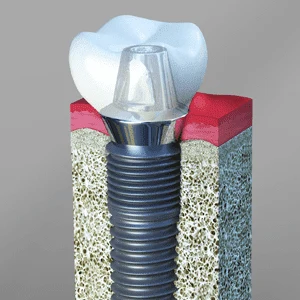
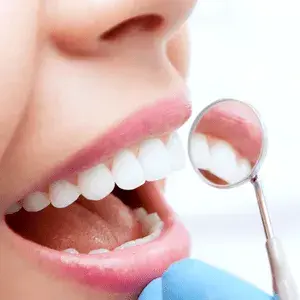
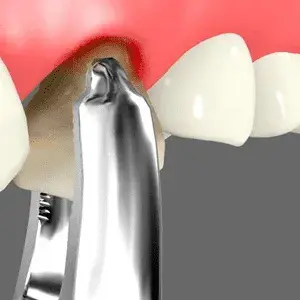
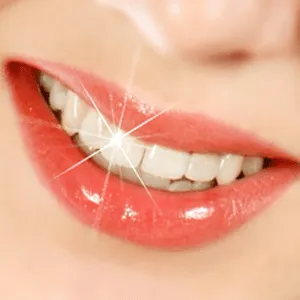
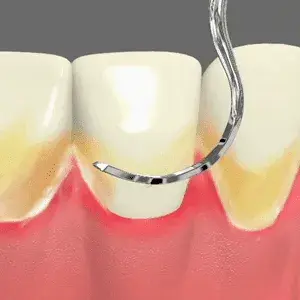
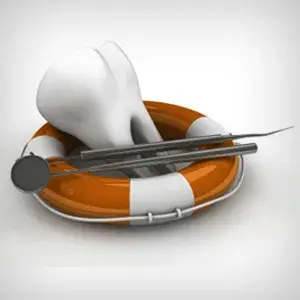



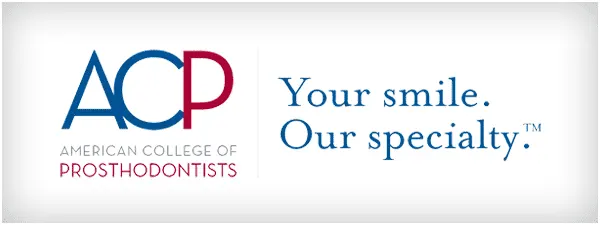


based on 118 reviews
based on 31 reviews
based on 60 reviews